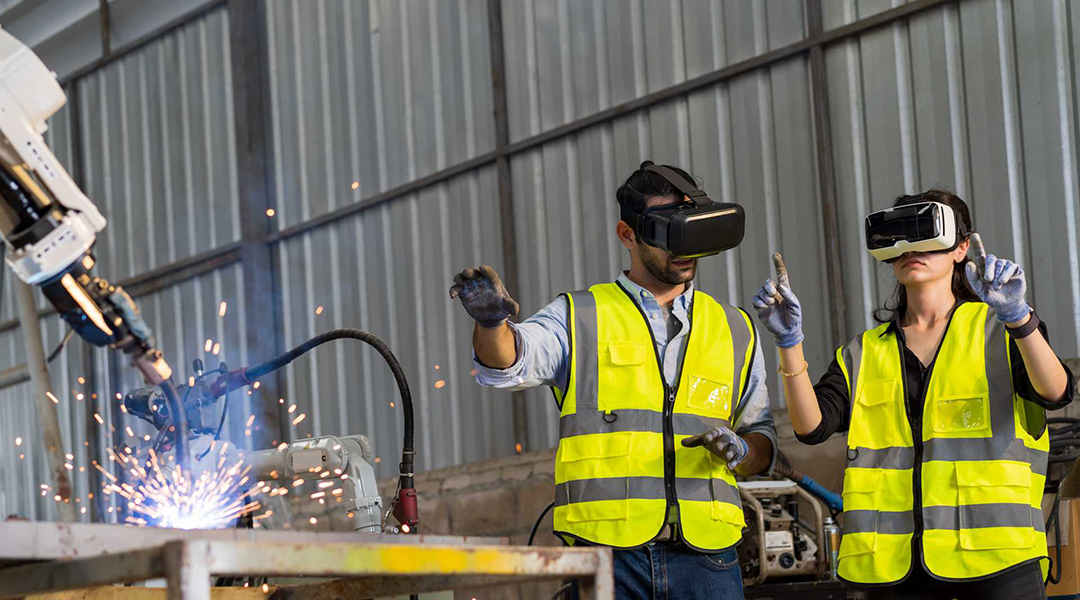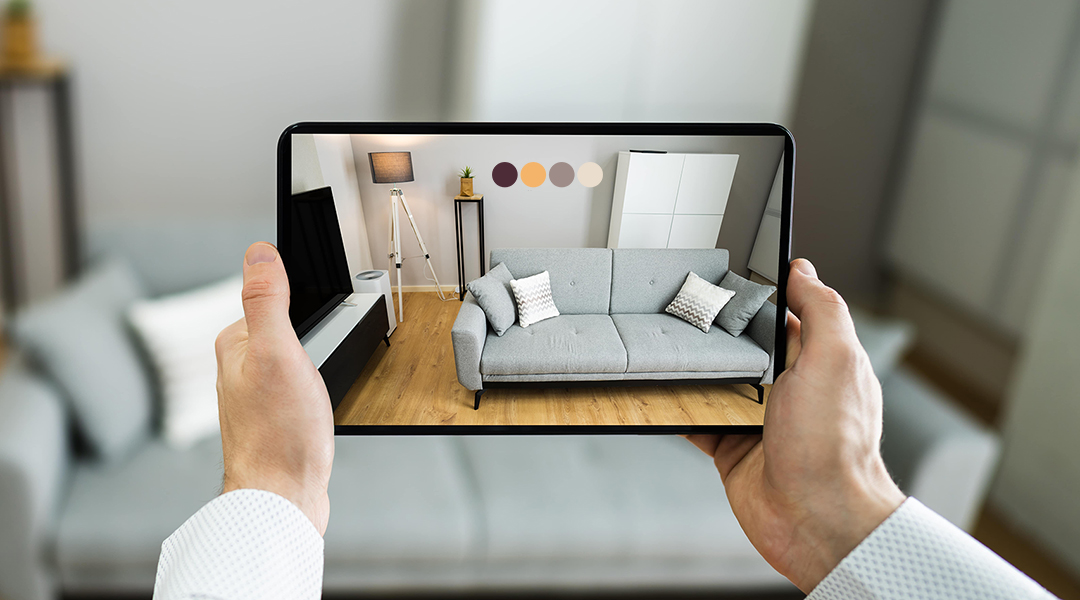Augmented reality (AR) is reshaping the fashion industry, enabling consumers to engage with clothing brands in transformative ways. With AR technology and every augmented reality app development company working on it, people can try on clothes virtually, merging digital convenience with real-world fashion. This technology bridges the gap between online shopping and in-store experiences, enhancing personalization and shopper satisfaction.
As AR integrates further into daily shopping routines, it opens new avenues for consumer interaction, making shopping experiences not only more enjoyable but also more efficient. Fashion brands that adopt AR are able to extend their reach and foster stronger connections with customers, driving loyalty and repeat business.
AR reduces return rates and increases consumer confidence in their purchase decisions by providing a platform for users to visualize clothes in real-life settings before buying. Such a dynamic shift in how we shop is setting new standards for retail, making AR an essential element in the future of fashion.
Exploring Augmented Reality in Fashion
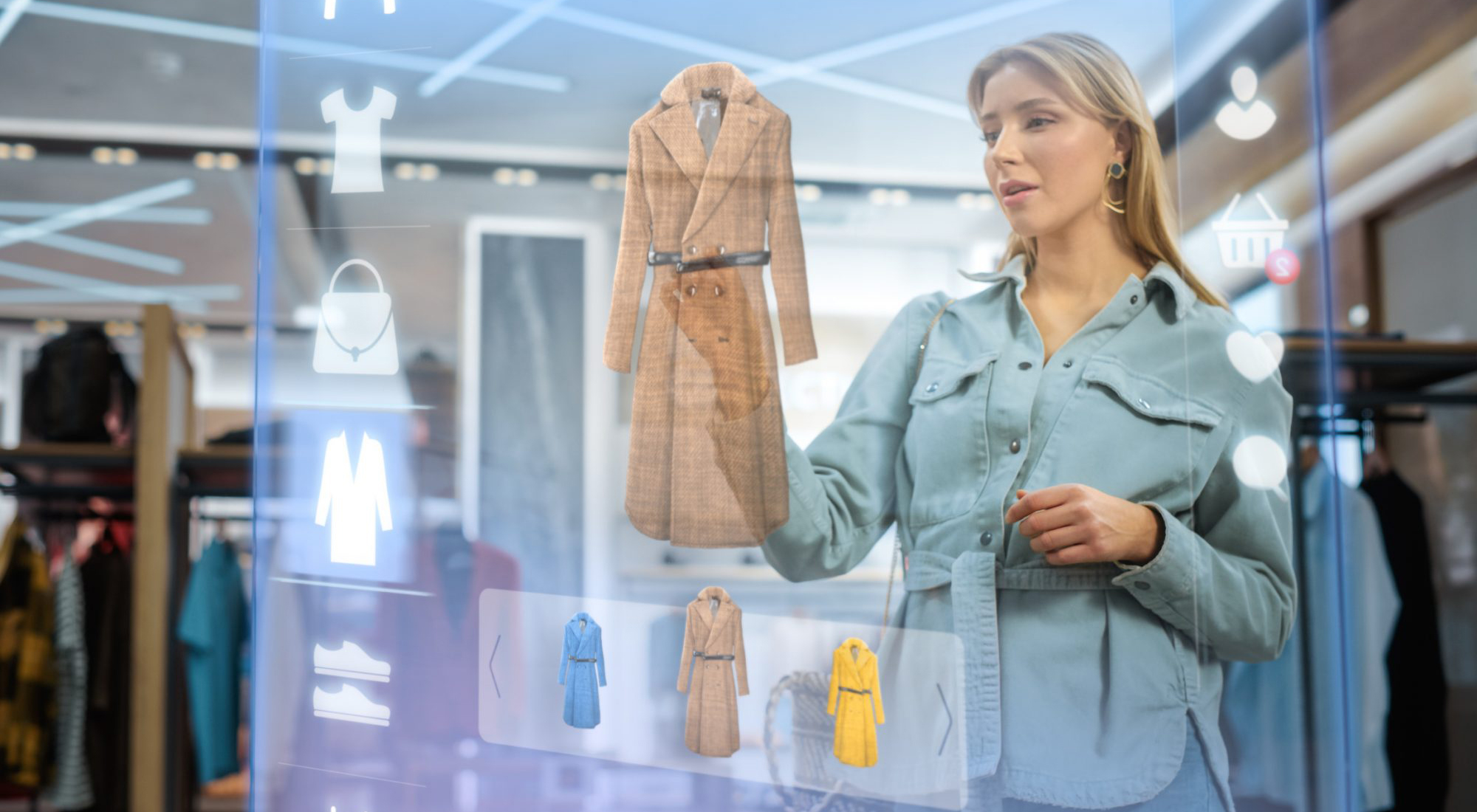
Augmented reality in fashion offers a variety of applications that enhance both the retail experience and the design process. There are two main types of AR: marker-based and markerless. Marker-based AR requires a camera to recognize a specific visual cue, such as a QR code, which triggers digital content display. This type is useful for interactive advertising and in-store promotions, where scanning a tag can show how a piece of clothing looks on a model.
On the other hand, markerless AR uses advanced sensors to overlay digital content onto real-world environments without needing a marker. This technology allows consumers to see how clothes look on themselves or in their own space, providing a more personal shopping experience. Each type of AR offers distinct benefits that can enhance shopping experiences, provide interactive user engagement, and offer practical tools for designers.
Specifically, AR fashion and fashion AR are pivotal in integrating AR technology in fashion and digital fashion AR into mainstream use. AR in the fashion industry is rapidly evolving, with these applications improving how consumers interact with brands and how they visualize and engage with fashion products in a digital context.
The Evolution of AR Technology in Fashion
AR technology in fashion has progressed significantly over the past decade. Initially, AR was used primarily for marketing, enabling brands to create interactive campaigns where users could see virtual fashion shows on their phone screens. Now, augmented reality clothing applications allow users to try outfits virtually before purchasing. This shift greatly reduces the barrier to online shopping, as it helps to ensure fit and style satisfaction before buyers commit to a transaction.
Advancements in AR tools have also impacted the design and manufacturing stages. Designers now use AR to visualize new outfits on virtual models of various body types, making it easier to refine designs without the need for physical samples. Additionally, manufacturers can preview designs in different fabrics and colors through AR, speeding up the decision-making process and reducing waste.
The integration of AR into mobile devices has been crucial. With most consumers having access to smartphones, AR apps are more widely used, increasing consumer interaction with fashion brands. AR technology continues to evolve, with improvements in 3D modeling and real-time rendering enhancing how clothing appears in virtual fittings, making the technology more accessible and realistic for everyday use.
Key Technologies Powering AR in Fashion
Augmented Reality vs. Virtual Reality in Fashion
To fully grasp the impact and utility of modern technology in fashion, it is essential to distinguish between AR and VR. Each offers unique benefits and operates under different conditions, catering to specific needs within the fashion industry.
| Feature | Augmented Reality (AR) | Virtual Reality (VR) |
| Environment | Overlays digital elements in the real world. | Creates a completely immersive digital environment. |
| Hardware | Often uses smartphones or tablets; specialized glasses may be used. | Requires headsets such as Meta Quest or HTC Vive. |
| User Interaction | Users can interact with both digital and physical elements simultaneously. | Users interact solely within a digital space, isolated from the physical world. |
| Applications | Used for virtual try-ons, enhancing the shopping experience by allowing users to see how clothes look on them in a real setting. | Used for designing and visualizing new fashion designs in a fully immersive 3D space. |
| Accessibility | More accessible due to the widespread availability of smartphones. | Less accessible due to the need for more expensive and specialized equipment. |
| Purpose in Fashion | Enhances the retail experience by integrating digital aspects into everyday shopping. | Mainly used in design and pre-production stages to visualize and modify designs before physical production. |
| Impact on Shopping | Improves convenience and decision-making in shopping by providing a realistic view of products. | Offers an immersive experience that is more about exploration and less about direct shopping utility. |
The comparison above clearly outlines how AR and VR serve the fashion industry in different but equally significant ways. AR enhances the shopping experience with practical, real-world applications, while VR offers deep, immersive environments ideal for creative exploration and design. Both technologies continue to shape fashion's future landscape, driving a new era of digital interaction and creativity.
Overview of the Augmented Reality Fashion Market
The augmented reality fashion market is poised for substantial growth in the coming years, with projections indicating that the AR market will reach a valuation of $38.6bn by 2024. This surge is largely fueled by the integration of AR technologies with mobile and wearable devices, enhancing consumer engagement and shopping experiences.
A significant trend in the AR fashion sector is the widespread adoption of mobile AR users, which is expected to grow to 1.7bn globally by 2024. This increase from 0.44m in 2019 underscores the rapid acceptance of AR applications in everyday mobile usage, further boosted by AR hardware and software advancements.
Number of mobile AR active user devices worldwide from 2019 to 2024 (in billions)
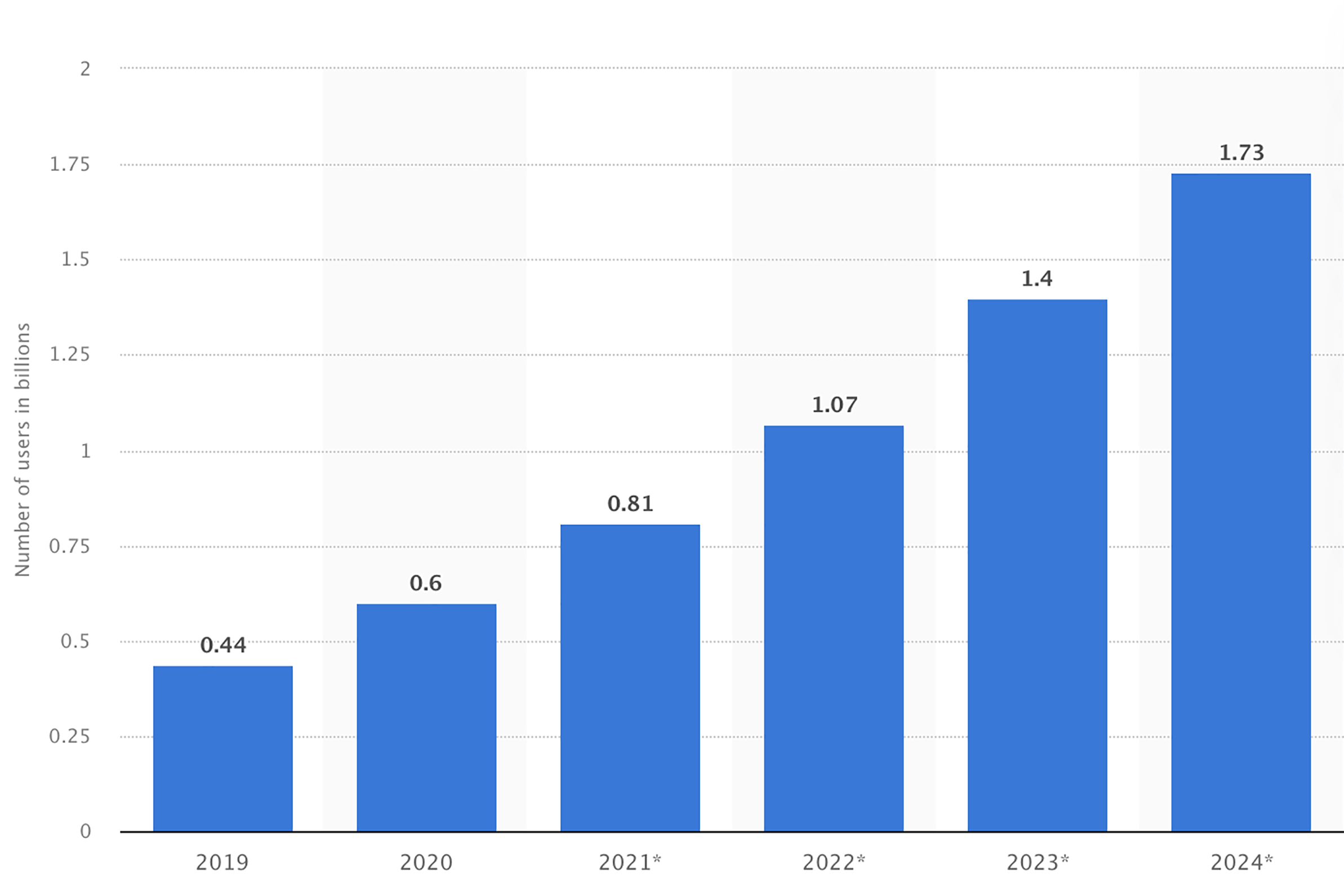
Retailers and marketers are increasingly utilizing AR to attract new customers, driven by the necessity for innovation following the pandemic's impact on physical retail. For instance, AR live-stream shopping is gaining momentum, offering an interactive shopping experience that combines the immediacy of live video with the immersive quality of AR. This trend is not just about enhancing customer interaction but also about reducing product return rates by allowing more accurate previews of products through AR.
Additionally, the integration of AR with NFTs and digital humans is creating novel marketing opportunities within the fashion industry. Brands are using AR to create digital avatars and virtual try-on experiences for jewelry and apparel, thereby building deeper emotional connections with consumers. This approach not only enhances online shopping experiences but also helps brands stand out by offering unique digital interactions.
Overall, the AR fashion industry is evolving into a more immersive and interactive landscape, where augmented reality and fashion, AR digital fashion, and AR for fashion significantly enhance the consumer's ability to visualize and experience products remotely. These advancements are promising a robust growth trajectory for the AR fashion market through 2024 and beyond as they redefine how fashion is consumed and experienced in the digital age.
Enhancing Customer Loyalty with AR in Fashion
Augmented reality is quickly becoming a powerful tool for fashion retailers aiming to boost customer loyalty. By integrating AR into their shopping platforms, brands offer a more engaging and personalized experience that resonates with modern consumers. For example, AR fashion stores enable customers to see themselves wearing products through virtual try-on tools, reducing the uncertainty often associated with online shopping. This direct visualization helps lower return rates and increases satisfaction by aligning customer expectations with reality.
Retailers are also utilizing AR to create interactive marketing campaigns where customers can interact with products in unique ways at their convenience. AR fashion shows and AR fashion boutiques leverage immersive environments that entertain and deeply embed brand value in the consumer's mind, enhancing brand recall. Furthermore, AR apps can push personalized promotions and products to users based on their interaction history, which makes promotions feel more relevant and timely, thereby increasing the likelihood of purchases.
Loyalty programs are another area where AR shows promising potential. By gamifying the shopping experience — offering rewards and incentives through AR experiences — customers are more likely to return and engage with the brand consistently. The novelty and excitement of AR in fashion retail can transform routine purchases into a more dynamic part of a customer's lifestyle, deepening their emotional connection to the brand.
As a result, AR offers fashion retailers an array of strategies to increase customer loyalty. From improving the accuracy and enjoyment of online shopping to delivering personalized and interactive brand experiences, AR can significantly enhance the way brands engage with their customers. Through continuous engagement and satisfaction, AR helps AR fashion brands build a loyal customer base in a competitive digital marketplace.
Get your AR app! Unlock the ultimate fashion experience.
Advantages of Augmented Reality Applications in Fashion
AR applications in fashion are proving to be beneficial for both consumers and retailers. Here are some of the key advantages:
Enhanced customer experience. AR provides shoppers with the ability to try on clothes virtually from anywhere. This convenience improves their shopping experience, making it faster and more enjoyable.
Reduced return rates. With AR's try-before-you-buy feature, customers are more likely to be satisfied with their purchases. They see how items fit and look on their own bodies before buying, which greatly decreases the likelihood of returns.
Increased sales. Retailers find that AR can lead to higher conversion rates. Customers who are engaged by AR experiences tend to browse longer and buy more, boosting overall sales.
Personalized shopping. AR applications can suggest items based on the customer's past behavior and preferences, offering a personalized shopping journey that suggests products tailored to individual tastes.
Interactive marketing tools. Brands use AR to create compelling marketing campaigns that interact directly with consumers. These campaigns create memorable experiences that enhance brand loyalty and awareness.
Operational efficiency. AR helps retailers by streamlining the design and production processes. Designers can use AR tools to visualize changes instantly, reducing the time and cost associated with sample production.
Competitive edge. Brands adopting AR are viewed as forward-thinking, which enhances their image and attracts tech-savvy consumers looking for innovative shopping experiences.
Sustainable practices. By reducing the need for physical samples and minimizing returns, AR contributes to more sustainable business practices, appealing to environmentally conscious consumers.
Each of these advantages shows how AR applications are transforming the fashion industry, offering substantial improvements in how brands operate and how consumers shop.
Practical Applications of Augmented Reality in the Fashion Sector
Augmented Reality technology is reshaping how consumers interact with fashion brands by offering more immersive and interactive experiences. One of the most effective uses of AR in the fashion sector is virtual try-ons. Retailers implement AR technology to allow customers to visualize clothes, accessories, or makeup on themselves through their smartphone cameras before making a purchase. For example, platforms like Snapchat have partnered with global brands to allow users to try on sunglasses and makeup virtually, enhancing customer satisfaction and reducing return rates.

Another practical application is in-store navigation and personalized marketing. Fashion stores are adopting AR to guide customers through their physical locations using their mobile devices, which display information about products as they pass. It personalizes the shopping experience and can suggest products based on previous purchases or browsing history.
AR also improves online shopping. By incorporating AR technology, online retailers provide customers with a more dynamic view of products. Customers can see 3D models of clothing items on various body types or watch how fabric moves and fits, which helps in making more informed purchasing decisions.
For designers and brands looking at how to build an AR app, it's crucial to focus on user experience and real-time feedback. The development process involves selecting the right AR development kit and platform that can integrate seamlessly with existing ecommerce frameworks and support the graphical needs of high-quality 3D models.
Lastly, AR is playing a role in sustainable fashion practices by enabling customers to see the lifecycle of a product through storytelling elements. Apps can show the origins of materials and the manufacturing process through an interactive AR journey, increasing transparency and fostering consumer trust. These examples underline AR's role in providing practical solutions that enhance how customers interact with fashion products, making shopping experiences both engaging and informative.
Program-Ace Develops FashionTek: A Virtual Dressing Room App for Clients
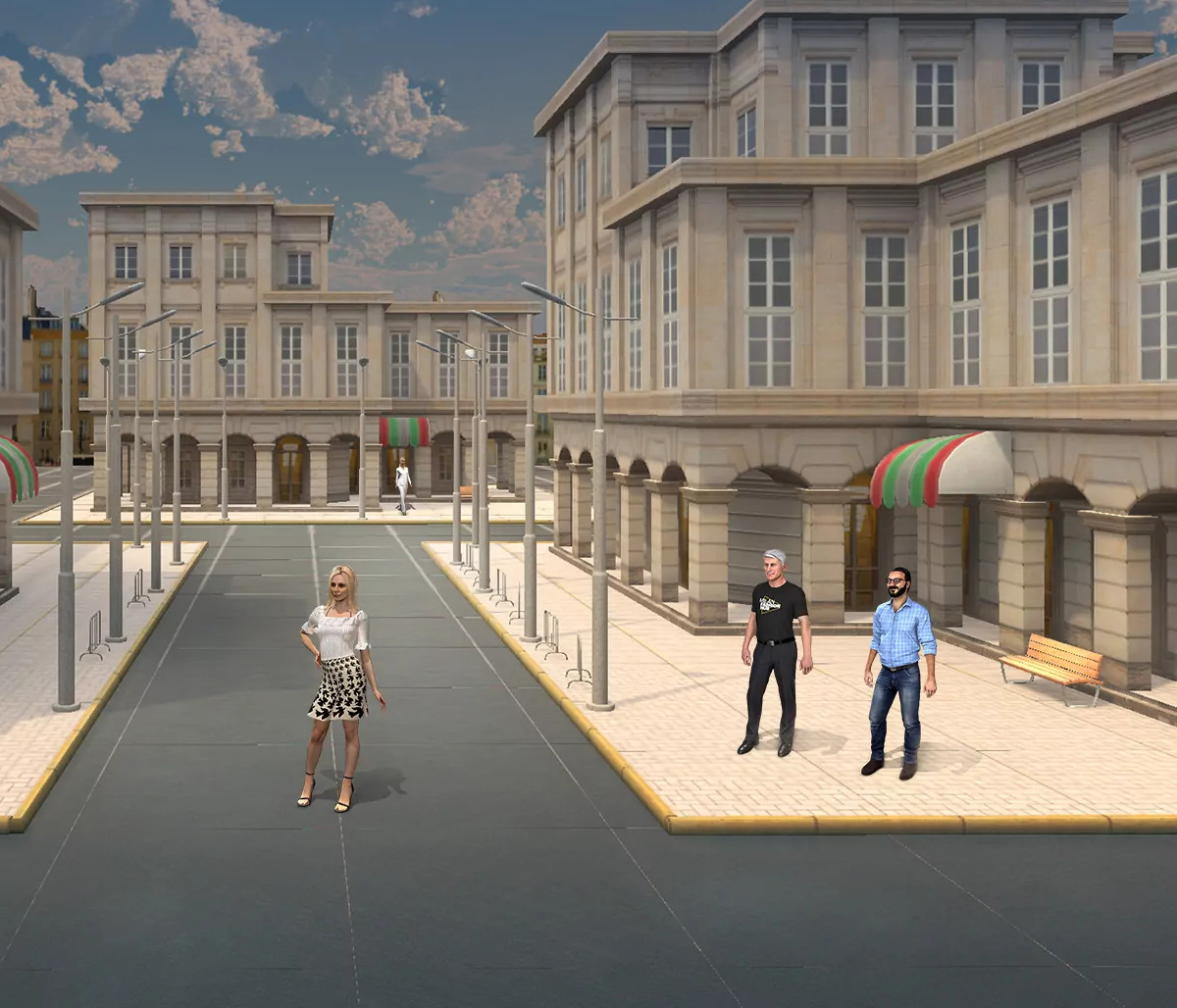
Experience the future of shopping with FashionTek Boutique, your mobile 3D virtual dressing room. Try on various clothes virtually, customizing your digital avatar to match your body type and style preferences — all from the comfort of your home.
Leading Examples of Augmented Reality in Fashion
AR has significantly impacted the fashion industry by offering unique shopping experiences. Primarily, there are a lot of fashion brands using AR; for instance, H&M and Burberry are leading examples of brands that have creatively integrated AR to enhance consumer engagement and streamline online shopping.
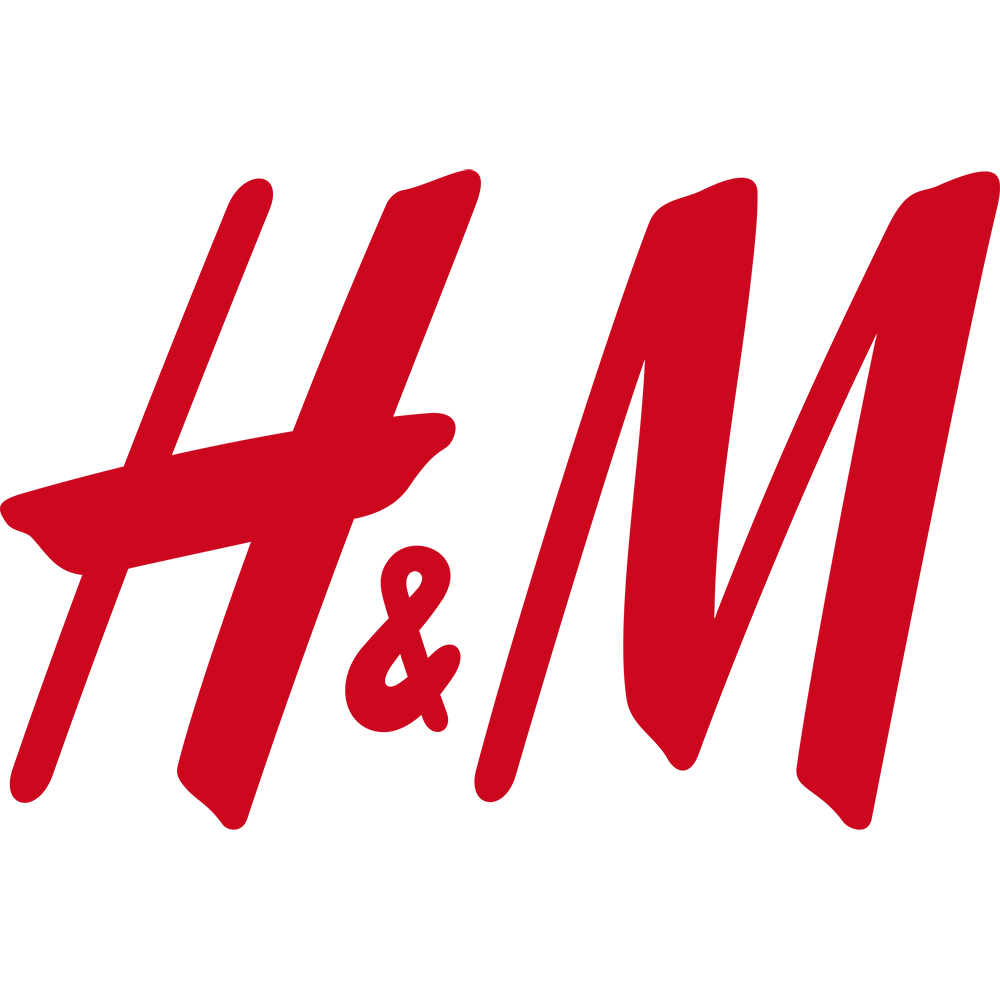
H&M ventured into AR by introducing a virtual clothing line accessible only through AR experiences and not available for physical purchase. In 2022, they launched a campaign that allowed users to "try on" virtual outfits by submitting photos, which 3D designers then transformed into animated images for sharing on social media. This approach engaged customers creatively and positioned H&M at the forefront of digital fashion trends.
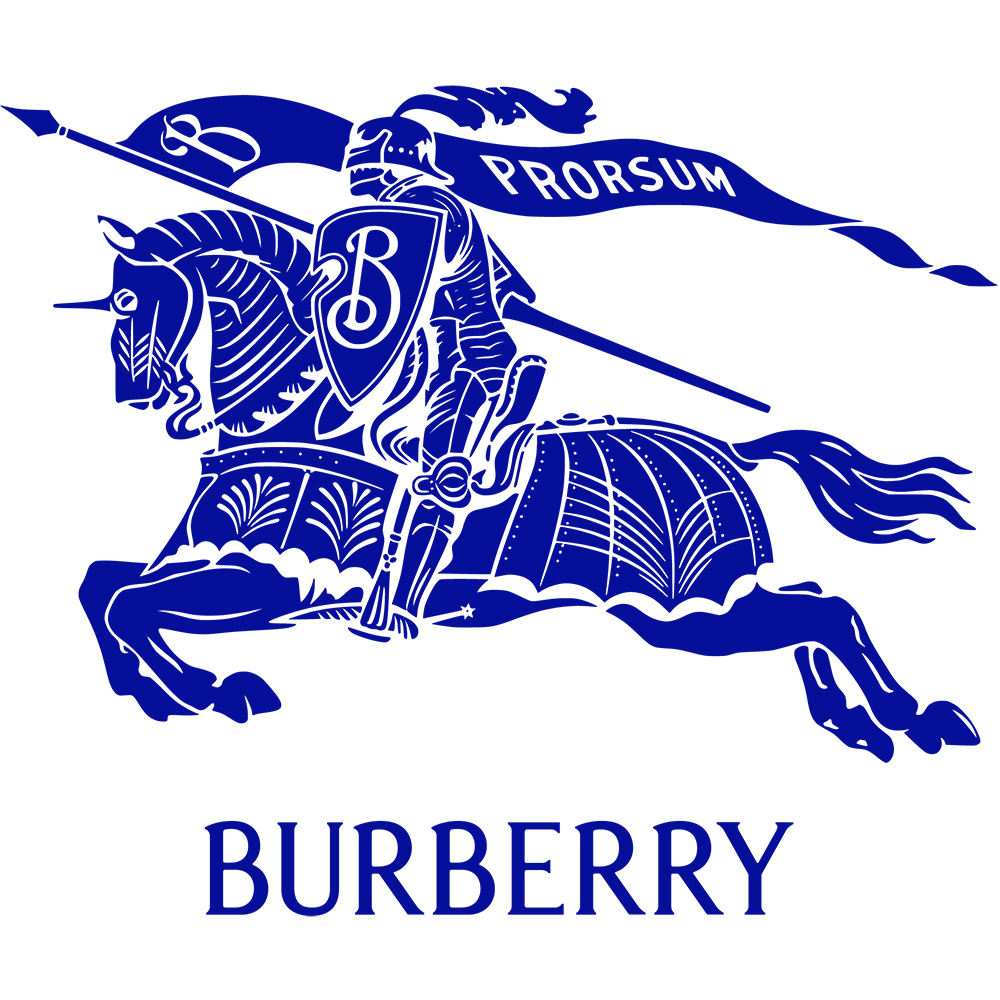
Burberry has effectively used AR to bring the in-store experience online. Collaborating with Google enabled consumers to view products in 3D on Google's platform, enhancing their online shopping experience. This initiative helped Burberry reach a broader audience, offering a more tangible and interactive product view, which likely reduced the rate of returns and increased customer satisfaction.

Zalando, a leading online retailer, introduced "Try On" via Snapchat, where users can virtually try on clothing using AR technology integrated with Snapchat Lenses. This feature demonstrates how AR can bridge the gap between online browsing and real-life shopping by providing a more accurate representation of how clothes might look on a person. It enhances customer engagement and confidence in purchasing decisions, leading to higher satisfaction and reduced return rates.
Projecting the Future Growth of AR Fashion
The projected growth of AR in the fashion industry underscores a transformative shift expected to enhance how consumers interact with fashion brands. With AR technologies, shoppers enjoy immersive and interactive experiences, viewing garments on virtual avatars that reflect their images, significantly personalizing shopping.
Experts predict that the AR market in fashion will continue to expand as consumer interest in personalized and technologically enhanced shopping experiences grows. Increased smartphone penetration and advancements in AR technology will facilitate broader adoption. AR allows consumers to try on clothes virtually and provides a platform for brands to showcase unique fashion lines without physical limitations.
For example, leading fashion brands are adopting AR to allow customers to visualize products comprehensively before purchasing. By integrating AR, retailers aim to reduce return rates and enhance customer satisfaction, driving sales growth. Such initiatives indicate that AR will play a crucial role in the future of e-commerce, blending digital convenience with the traditional try-before-you-buy assurance of brick-and-mortar stores.
Future growth will likely hinge on technological advancements that make AR more realistic and accessible. AR applications are expected to offer more detailed and accurate representations of clothing items as they become more sophisticated, further improving user experience and satisfaction.
Education about AR's potential and its benefits will also be crucial. As consumers and retailers become more knowledgeable about AR's capabilities, its adoption in the fashion industry is expected to soar, marking a new era of digital retail. These insights provide a glimpse into the promising expansion of AR in fashion, promising significant impacts on consumer behavior and industry sales strategies.
Taking the Leap into AR Fashion with Program-Ace
Program-Ace, an innovative solution integrator and a software development company, has expertly demonstrated the value of integrating augmented reality into the fashion industry. Our cutting-edge solutions allow brands to offer a seamless virtual try-on experience, enriching the customer journey and significantly boosting online sales. As AR technology continues to evolve, the opportunity for fashion retailers to distinguish themselves in a competitive market grows.
Engaging with AR can open new avenues for customer interaction and satisfaction, making it a crucial tool for future growth. If your brand is ready to explore the dynamic possibilities of AR fashion, Program-Ace is here to guide you through every step. Contact us today for more information on our services and to start transforming your digital strategy.
